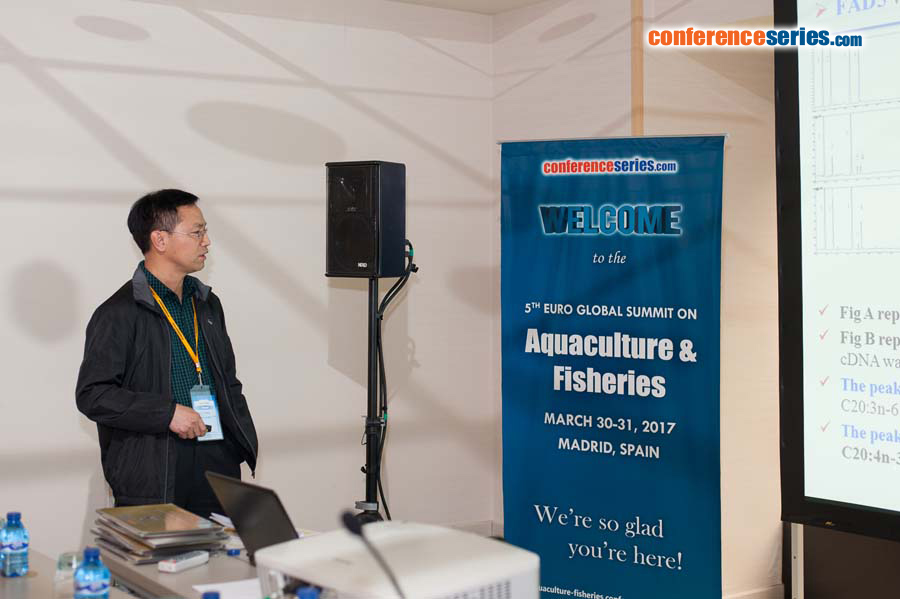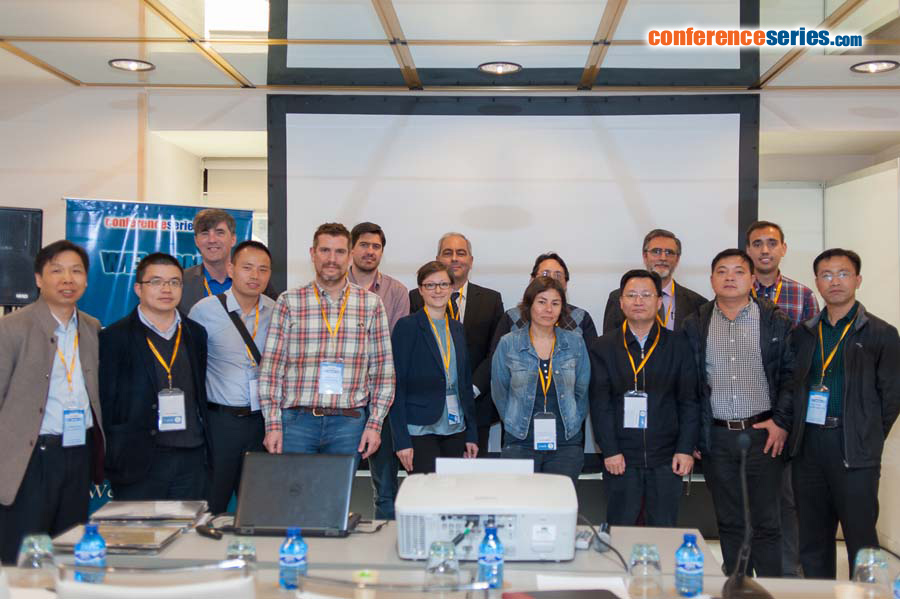
Zheng Huaiping
Shantou University
China
Title: Study on genes involved in biosynthesis of PUFA in marine bivalves
Biography
Biography: Zheng Huaiping
Abstract
PUFA play an important role in development, reproduction, growth, etc., of marine bivalves. Previous research showed that bivalve is rich in PUFA, especially EPA(C20:5n-3) and DHA(C22:6n-3), however, bivalve could biosynthesize PUFA is always a controversial topic. Radionuclide tracer analysis gave evidence some bivalve could de novo synthesis PUFA from precursors, which, however, could not exclude effect of microorganism inside the experimental animals. Four genes (ELOVL2-like, ELOVL4, FAD5 and FAD8) involved in PUFA metabolism were cloned in noble scallop Chlamys nobilis. ELOVL2-like and ELOVL4 could elongate C18 and C20 to C22 and C24 respectively, while FAD5 and FAD8 showed Δ5 and Δ8 desaturation activity respectively. Thesis studies firstly gave molecular evidence that scallop could at least biosynthesize AA and EPA through “Δ8 pathway”. DHA might not synthesize in noble scallop because no desaturase with Δ4 and Δ6 activity was found. It seemed impossible that the scallop biosynthesize DHA through the “Δ8 pathway” C24:5n-3àelongationàC26:5n-3àΔ8desaturationàC26:6n-3àβ-oxidationàC24:6n-3àβ-oxidationàC22:6n-3(DHA), because ELOVL4 cloud not provide C26 substrates by elongating C24. As a result, noble scallop possibly relied heavily on diet DHA to optimize its health. Interestingly, ELOVL2-like, ELOVL4 and FAD8 genes showed less efficient activity towards n−3 PUFA substrates than their homologous n−6 substrates, resulting in a relative low efficiency to biosynthesis n−3 PUFA, implying an adaption to marine environment.



